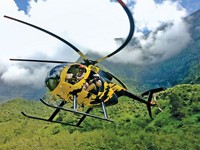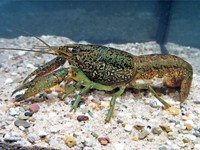Advertisement
Grab your lab coat. Let's get started
Welcome!
Welcome!
Create an account below to get 6 C&EN articles per month, receive newsletters and more - all free.
It seems this is your first time logging in online. Please enter the following information to continue.
As an ACS member you automatically get access to this site. All we need is few more details to create your reading experience.
Not you? Sign in with a different account.
Not you? Sign in with a different account.
ERROR 1
ERROR 1
ERROR 2
ERROR 2
ERROR 2
ERROR 2
ERROR 2
Password and Confirm password must match.
If you have an ACS member number, please enter it here so we can link this account to your membership. (optional)
ERROR 2
ACS values your privacy. By submitting your information, you are gaining access to C&EN and subscribing to our weekly newsletter. We use the information you provide to make your reading experience better, and we will never sell your data to third party members.
Pharmaceuticals
Newscripts
An Electromagnet’s Epic Journey, Birth Control For Wildlings
by Lauren K. Wolf
July 1, 2013
| A version of this story appeared in
Volume 91, Issue 26

Why did the 50-foot-wide electromagnet cross half the country? To help physicists discover new subatomic particles, of course.
Mounted atop a 64-wheel trailer, a massive superconducting circular magnet left Brookhaven National Laboratory on June 23 and rolled down the highway on New York’s Long Island. Pulling out just past midnight and moving at a jogger’s pace, the magnet made its way to nearby Smith Point County Marina, where a crew hefted it onto a barge.
The “ring,” as it’s affectionately called by the scientists and engineers who look after it, is headed to Fermi National Accelerator Laboratory, west of Chicago. By the time it arrives there toward the end of summer, it will have traversed 3,200 miles around the tip of Florida and up a series of rivers.
At Fermilab, the magnet will become part of a machine designed to store elementary particles, called muons, which are similar to electrons but heavier. Inside the magnetic field of the ring, a muon’s spin “wobbles” by a predicted amount, says Hogan Nguyen, a scientist at Fermilab who has the Tolkienesque title “manager of the ring.”
Scientists at Brookhaven and Fermilab, as well as other institutions worldwide, want to measure this wobble, which is affected by the presence of subatomic particles such as bosons, to detect undiscovered particles and forms of energy in the universe.
“This experiment has the potential to open doors to new types of physics,” says Andre Salles, a Fermilab spokesman. And that’s why the electromagnet needs to move, he says. Fermilab already has the apparatus for generating an intense beam of muons, but it doesn’t have an electromagnet for storing them. “And it’s going to cost us 10 times less just to move the electromagnet than it would to build a new one,” Salles adds.
When C&EN went to press, the electromagnet was gliding south along the East Coast. To follow its journey, go to http://1.usa.gov/1bvRtYp.
As physicists track the safe passage of the ring across the eastern U.S., scientists and policymakers are tracking the growing population of wild horses and donkeys in the West.

These free-ranging equids don’t have natural predators, so there’s nothing to prevent them from depleting the vegetation and water on the arid lands they roam—lands that also need to support livestock and other wild animals.
Charged with regulating the U.S.’s wild horses and donkeys, the Bureau of Land Management (BLM) currently deals with the situation by rounding up a portion of the animals and adopting them out to farms and ranches, says Lynn Huntsinger, a rangeland ecology expert at the University of California, Berkeley. Still, many animals don’t get adopted: According to BLM, 45,000 wild horses and donkeys were living in costly holding areas such as corrals during fiscal 2012.
“It’s not a sustainable way of dealing with the problem,” Huntsinger says.
Enter the National Research Council. BLM asked the organization to review the situation and find scientifically sound solutions. Its committee, which included Huntsinger, released a report last month pointing to fertility-control methods.
One treatment option is porcine zona pellucida (PZP), a vaccine that successfully controlled wild horse populations in isolated spots such as Maryland’s Assateague Island. When injected into a female equid, the vaccine kick-starts production of an antibody in the animal that prevents sperm-egg attachment.
No word yet on how this treatment might be administered to the U.S.’s widely dispersed wild equids, but the Newscripts gang guesses it might be as challenging as, say, sending a huge electromagnet on a 3,200-mile journey.
Lauren Wolf wrote this week’s column. Please send comments and suggestions to newscripts@acs.org.





Join the conversation
Contact the reporter
Submit a Letter to the Editor for publication
Engage with us on Twitter